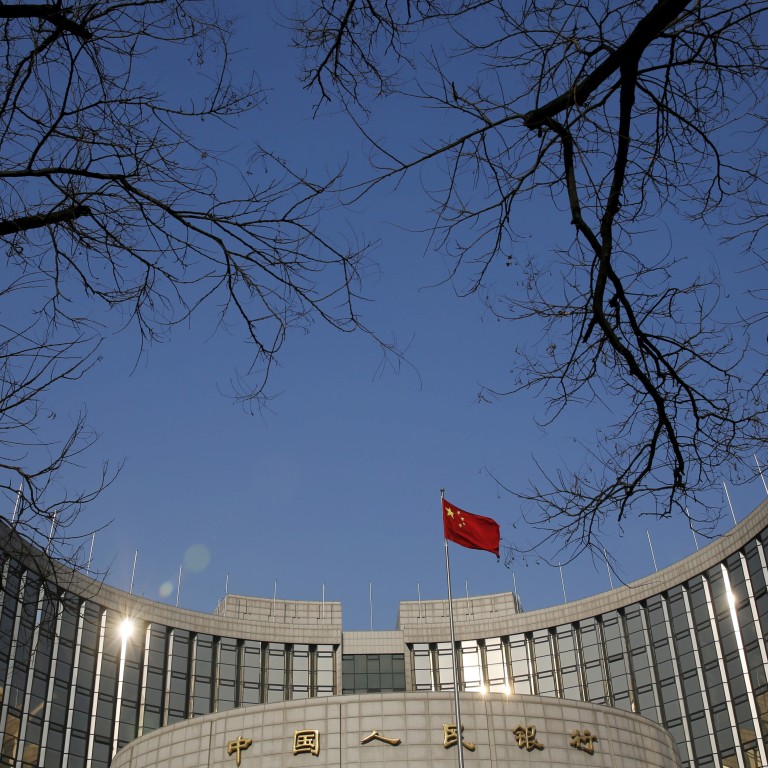
China’s economic recovery from coronavirus impact set to signal dialing back of monetary stimulus measures
- The People’s Bank of China (PBOC) has not cut banks’ cash reserve ratio for two months, defying analyst expectations, while letting market interest rates rise
- But the PBOC is unlikely to completely end stimulus efforts, given persistent economic challenges
China has started to ease up on the emergency monetary measures it used to support its economy in response to the coronavirus outbreak, according to analysts.
Expectations are that the PBOC will adopt a more targeted and structured approach to stimulus in the second half of the year, instead of a continued broad relaxation of monetary conditions.
The Chinese central bank has also refrained from further cuts in banks’ reserve requirement ratio for two months, despite widespread market expectations for at least one more cut. It had cut the ratio three times this year, unfreezing 1.75 trillion yuan (US$250 billion). The PBOC has often used adjustments to the ratio to reduce the amount of money that banks are required to hold in reserve, to pump more funds into the banking system.
At the same time, the PBOC in recent weeks has shown a tolerance for a rise in the cost that banks pay to borrow yuan from the Chinese interbank market.
Partly due to such worries, the Chinese stock market fell 5 per cent last week, pressing the brakes to some degree on the bull run that started in late June.
Analysts from the Institute of International Finance in Washington said that PBOC had begun to suspend its moderate pandemic emergency stimulus as the Chinese economy has bounced back and as concerns about financial froth have increased.
“Since late May, the PBOC has paused both the quantity [of new liquidity] and rate easing, warned the market against leveraging, and hinted at its exit from pandemic-related stimulus,” they wrote in a note published on Wednesday.
Shen Jianguang, vice-president and chief economist at JD Digits, the fintech arm of e-commerce firm JD.com, said that Chinese policymakers are now watching to see the effects of the monetary easing measures already introduced.
Monetary policy should be more flexible and moderate, so we are now emphasising the word ‘moderate’
“The central bank is also afraid of excessive stimulus, so it is opting to stay put for now and is preparing for the next step in policy decisions,” Shen said.
Central bank officials also indicated that they are now pivoting back to normalcy from a crisis stance, as a batch of financial stimulus worth 1.8 trillion yuan (US$257 billion), introduced at the height of the domestic outbreak, basically completed their mission.
“Monetary policy should be more flexible and moderate, so we are now emphasising the word ‘moderate’,” said Guo Kai, deputy director of the PBOC’s Monetary Policy Department, earlier this month.
“If the credit expansion is too rapid, more rapid than the economic recovery, it will result in a waste of funds. It is also unfavourable if interest rates are too low. If interest rates are significantly lower than the level of the potential economic growth rate, it will cause arbitrage and resource misallocation, guiding the money to areas where it should not go.”
At a meeting in mid-April, the ruling Communist Party’s Politburo, the government’s top policymaking body, concluded that China would use cuts in the cash reserve ratio and interest rates, and other tools, to keep liquidity in the economy reasonable and ample, while guiding the market lending rate lower.
The latest actions from the Chinese central bank are in sharp contrast with those of its counterpart in Washington.
US Federal Reserve officials are set to gather in the coming week to discuss how to provide more economic stimulus, with the US Congress preparing another round of fiscal stimulus with a price tag of at least US$1 trillion, after US President Donald Trump admitted this week that the Covid-19 pandemic in the US could “get worse before it gets better”.
China could just maintain the current moderate pace [of its monetary policy]. Both expansion and contraction are unnecessary
“All aspects [of the Chinese economy] are improving. Under such circumstances, China doesn’t need to continue more aggressive stimulus like that in the US or Europe,” said Xu Hongcai, deputy director of the Economic Policy Commission at the China Association of Policy Science.
“China could just maintain the current moderate pace [of its monetary policy]. Both expansion and contraction are unnecessary.”
With the domestic economy showing clear signs of recovery, the side effects of the aggressive monetary stimulus earlier this year are now likely of greater concern to policymakers in Beijing. It brought a large amount of credit to the property market, especially in higher-tier cities such as Shenzhen, which recently experienced a home-buying frenzy.
“An over-aggressive stimulus creates a [property] bubble,” Xu added. “That is what we don’t want to see.”

